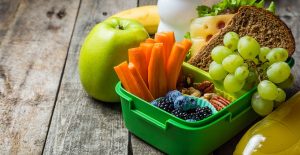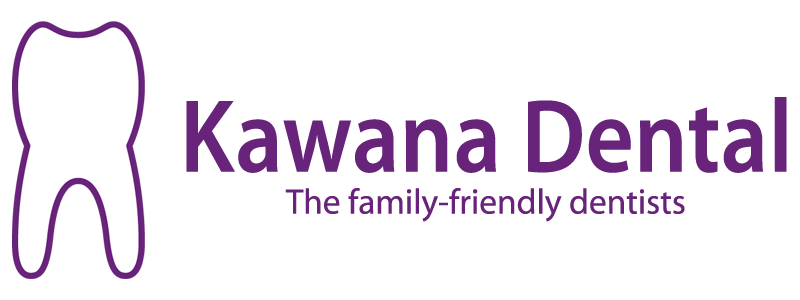02 Nov Prevention, Diet and Cleaning

If you want to avoid ever having another filling or extraction, read on….
Nearly all dentistry is completely unnecessary!
Nearly all the dentistry you have had in your mouth (with the possible exception of orthodontics or cosmetic dentistry) could have been avoided if you knew what was happening! This is a new concept to many people who believe that losing teeth is inevitable.
Prevention…
Download an information sheet re: Caries_Prevention.pdf
Having a dental hygienist clean your teeth and show you where you are “missing” is like having a grease and oil change for your car.
Do you have your car “serviced” every year, or wait until you have a light on the dashboard or smoke coming out of the bonnet before you do anything?
Waiting until there are flames coming out of the engine is probably going to mean some painfully expensive repairs.
How many more analogies do you need?
A little bit of advice from the hygienist, a regular scale and clean, an examination by your dentist to head off any issues, a little bit of knowledge on how to time your dietary indulgences and finally, fluoride toothpaste, a little floss, and Tooth Mousse are all you need to PREVENT ANY MORE FILLINGS OR EXTRACTIONS.
Dental decay and fillings are completely avoidable. All you have to do is stop snacking or grazing every day on refined carbohydrates and sweet foods or drinks. A sip or a bite TOO OFTEN does the damage….it’s the number of times a day that the teeth get an “acid bath”,not how much!! You can still eat “bad stuff”….just have more, less often!!!
If you want to avoid ever having another filling…
Don’t expose your teeth more than a few times a day to “tooth unfriendly” foods….
- ANYTHING with refined carbohydrates (processed white flour) such as breads, crackers, chips, Twisties and Shapes, snack bars, biscuits.
- Sugary stuff including dried fruit fruit , honey, fruit juices, heath food bars, soft and sport drinks
- Acidic drinks – soft drinks, juice, sports drinks, energy drinks.
Click this link to rethinksugarydrink.org.au
Without mentioning any names, soft, sport and particularly cola (including “diet”) drinks are not too far away from battery level acid. We constantly see young tradesmen or school kids whose teeth have dissolved and “aged” to double or triple their real age
Snacking and grazing can particularly be a problem with kids. Children who snack or graze on the above foods —-rather than tooth friendly snacks such as carrot/celery sticks, cheese (without the cracker) and nuts—– WILL GET DECAY.
Try to limit the number of times a day that teeth are exposed to the above “tooth unfriendly” foods and drink.
You can also limit the damage from tooth unfriendly foods by using Tooth Mousse, or by immediately following the food or drink with Recaldent (a Tooth Mousse style chewing gum) or any sugarless gum, such as Extra or similar. Even water rinsing can help.
NOTE… Be aware that brushing immediately after acidic stuff like fruit juice and soft, sport or cola drinks and even wine is not recommended for 20 minutes. The enamel is so softened by the acids that you can actually brush some of it away!
Floss
Flossing is a hassle. Does it really work? Well, yes. And we can prove it.
Have you ever flossed and wondered, “Why do I bother doing this? “Surely your toothbrush and toothpaste do enough to fight cavities and get rid of bad bacteria.
Well according to a new study, flossing may significantly reduce the amount of bad bacteria in your mouth.
Researchers from New York University studied 51 pairs of identical twins between the ages of 12 -21. In the study, all of the twins brushed their teeth and tongue with a manual roothbrush and toothpaste. One twin in each pair also flossed.
After two weeks researchers took samples of bacteria from each person’s mouth.
Twins who did not floss had more of the bacteria that cause periodontal disease and tooth decay.
Twins studies are powerful because twins have the same genes and similar habits.
“This study illustrates the impact flossing can have on oral health,” said Kenneth Kornman D.D.S.,Ph.D., who edits the Journal of Periodontology, in which the study was published.
Our hygienists can show you ways to floss more easily or help with Pikster (an alternative) use.
The Science of Decay
You CAN stop all cavities/decay in its tracks, no matter how damaged, weak, decayed, or “chalky”your teeth are !!
Cavities are the demineralized areas, or the holes, that form in teeth as a result of a bacterial infection called dental caries. This infection takes place when the normal healthy bacteria in the mouth are replaced by acid-producing bacteria. This shift in bacteria is primarily caused by two things:
- Prolonged acidic oral environment: caused by a lack of saliva or a sugary/acidic diet that favors acid-producing bacteria.
- Transmission: this infection is contagious! You can be infected by someone through exchange of saliva.
Drilling and filling has been the traditional method of treating cavities, but it doesn’t treat the infection, just the symptoms. Brushing and flossing has been the traditional method of prevention, but it does not change the pH (acidity) of the oral environment or treat the infection once it exists.
The caries infection is a very complex “biofilm” infection. There are currently 23 identified strains of bacteria and even some strains of yeast that all have the ability to metabolize and ferment the carbohydrates and sugars that we ingest and produce lactic, acetic, and formic acids as a waste product. These acids are responsible for eating away at the hard coating of the tooth, enamel, and causing demineralization and eventual cavitation, holes, within the enamel. The research and understandings of this process are far reaching, offering new avenues for prevention and treatment. Long-gone are the days when cavities were just bad things that happened to good people. They are caused by an infection that can be identified and treated.
Some of the challenges involved with treating the caries infection arise because it does encompass so many pathogens (organisms causing disease). Most infections we deal with are pathogen-specific, meaning there is one specific virus, bacteria, fungus, etc. that causes the infection. These diseases are, for the most part, easy to diagnose and treat, and respond well to antibiotics or can be prevented with vaccination. Examples might be strep throat, measles, ring worm, etc. But biofilm infections not only encompass many pathogens, but the structure of the biofilm community can be very protective and tough to penetrate. So, treating the infection not only involves agents able to dissolve the biofilm community in order to access the bacteria, but also using treatment that is able to affect the whole range of pathogens present.
These pathogens may also behave very differently when in the biofilm than they behave when studied in the laboratory on a petri dish. Biofilm bacteria may undergo as many as 84 genetic mutations within this complex community, helping them to survive and manipulate their environments in atypical ways.
The other research emerging in treating this infection is with regard to pH. The bacteria that live in the mouth, good and bad, survive in very specific pH ranges. The acid-producing type thrive at acidic pH levels, and die in an alkaline environment, while the healthy bacteria thrive in a neutral to slightly alkaline environment and die at acidic pH levels. So, another way we can work to reverse the infection is by using alkaline solutions (like bicarbonate) to neutralize the oral pH., or using special strategies such as Recaldent, tooth mousse and sugar free gums.
If you are looking for a checkup them book an appointment with the Sunshine Coast’s leading dentist, Kawana Dental.


